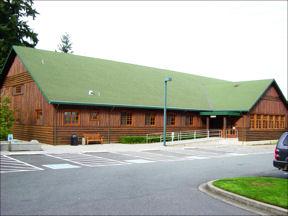 AboutAbout the ClubThe Bellevue Kendo Club was founded in 1989 by Jeff Marsten. Jeff Marsten is a 7th degree black belt with over 45 years of kendo experience. He has taken 14 trips to Japan in order to train and be taught by some of the best kendo practitioners and instructors in the world. The club offers instruction through the Bellevue Parks & Community Services department. The club serves the cities of Bellevue, Redmond, Kirkland, Bothell, New Castle, Sammamish and Issaquah. The classes are located in Highland Community Center, 14224 Bel-Red Rd, Bellevue.  Bellevue Kendo Club has the largest junior population (15 years and under) of all the clubs of the Pacific Northwest Kendo Federation. It offers a special junior kendo camp during the summer for its members and others through Bellevue Parks & Community Services. The instructors at Bellevue Kendo Club are recognized for their skill and ability and have distinguished personal kendo careers. They have nurtured and helped hundreds of kendo students during their long teaching tenure. Both the Beginning and Intermediate classes are taught to a set curriculum consisting of weekly units. The class progresses through each unit based on the ability of the majority to master the class material of each unit. If the majority of the class has not mastered the unit it is repeated until satisfactory progress is made. The Bellevue beginning and intermediate classes are based on a 10 week course but sometimes the sessions are greater than 10 weeks. There is a summer break taken between mid-August and mid-September. We are affiliated with the Pacific Northwest Kendo Federation, the regional governing body of kendo in this area. In turn, the PNKF is affiliated with the All United States Kendo Federation and, in turn, the International Kendo Federation. These affiliations allow the club to participate in seminars, promotional examinations, tournaments and other special events at the regional, national and international levels. Frequently Asked QuestionsWhere is the club located? How do I get there?
That question is answered here. When is practice?
That question is answered here. I'm a beginner, how do I sign up?
Register online here (search for keyword "Kendo") or by phone at 425/452-6885. It's my first day. What do I bring?
Come wearing comfortable, loose fitting clothes. All other equipment can be purchased through the club. Does it hurt?
Not really, once in awhile an errant strike will sting. The most common injuries are bruises from inaccurate strikes. Despite being a full-contact martial art, kendo is the safest to practice. It has a minimal injury rate and well below common activities such as baseball, soccer, basketball. What do I do if I have more questions?
If you have further questions, feel free to contact us. About Kendo(from Wikipedia) Kendo, or "way of the sword", is the Japanese martial art of fencing. Kendo developed from traditional techniques of Japanese swordsmanship known as kenjutsu. Kendo is a physically and mentally challenging activity that combines strong martial arts values with sporting-like physical elements. Practitioners of kendo are called kendoka, meaning "one who practices kendo", or kenshi, meaning "swordsman". Kendo is practised wearing traditionally styled clothing and protective armour (bogu), using one or two bamboo swords (shinai) as weapons. Kendo may be seen as a Japanese style of fencing. The movements in kendo are different from European fencing because the design of the sword is different, as is the way it is used. Unlike western style fencing, Kendo employs strikes with a defined 'edge' and tip of the shinai. Kendo training is quite noisy in comparison to other martial arts or sports. This is because kendoka use a shout, or kiai, to express their spirit, and when a strike or cut is performed, the front foot contacts the floor in a motion similar to stamping. There are estimates that about eight million people world-wide practice kendo with approximately seven million in Japan. Kendo is one of the modern Japanese budo and embodies the essence of Japanese fighting arts. |